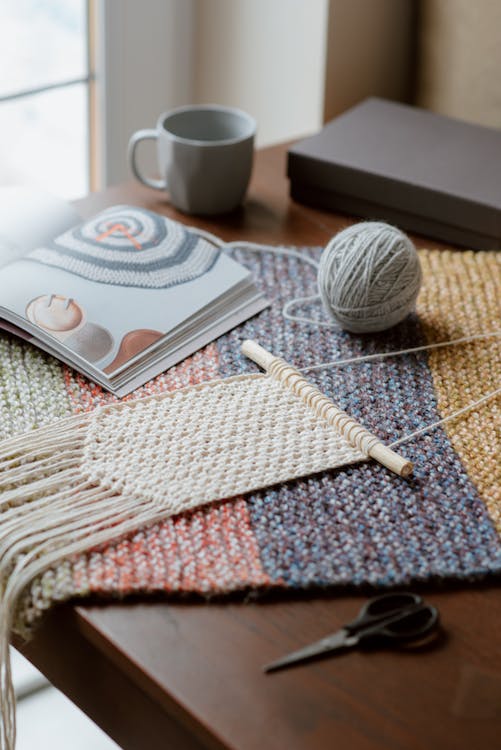Macramé is a form of textile produced using knotting (rather than weaving or knitting) techniques.The primary knots of macramé are the square (or reef knot) and forms of "hitching": various combinations of half hitches. It was long crafted by sailors, especially in elaborate or ornamental knotting forms, to cover anything from knife handles to bottles to parts of ships.

Cavandoli macramé is one variety that is used to form geometric and free-form patterns like weaving. The Cavandoli style is done mainly in a single knot, the double half-hitch knot. Reverse half hitches are sometimes used to maintain balance when working left and right halves of a balanced piece.
Materials used in macramé include cords made of cotton twine, linen, hemp, jute, leather or yarn. Cords are identified by construction, such as a 3-ply cord, made of three lengths of fibre twisted together. Jewelry is often made in combination of both the knots and various beads (of glass, wood, and so on), pendants or shells. Sometimes 'found' focal points are used for necklaces, such as rings or gemstones, either wire-wrapped to allow for securing or captured in a net-like array of intertwining overhand knots. A knotting board is often used to mount the cords for macramé work. Cords may be held in place using a C-clamp, straight pins, T-pins, U-pins, or upholstery pins.
For larger decorative pieces, such as wall hangings or window coverings, a work of macramé might be started out on a wooden or metal dowel, allowing for a spread of dozens of cords that are easy to manipulate. For smaller projects, push-pin boards are available specifically for macramé, although a simple corkboard works adequately. Many craft stores offer beginners' kits, work boards, beads and materials ranging in price for the casual hobbyist or ambitious crafter.
Recently, I've found an awesome video tutorial, check it out below!
